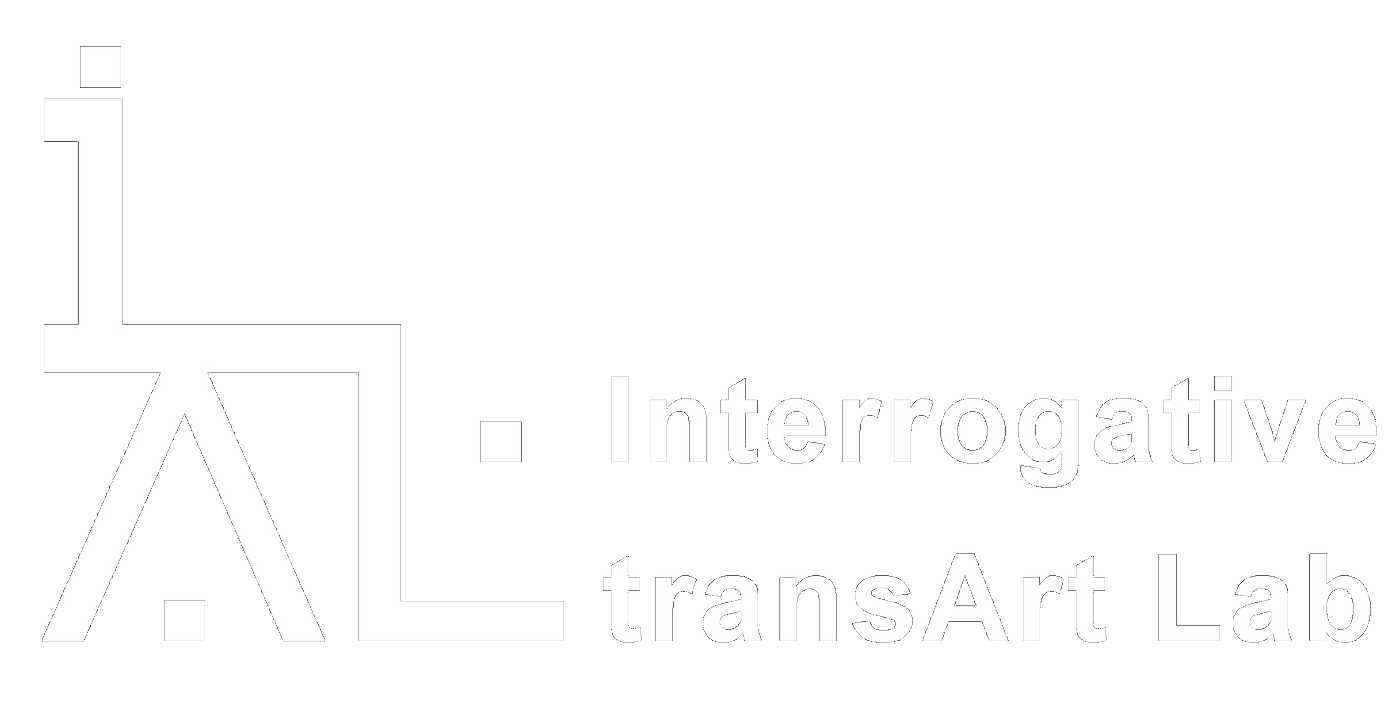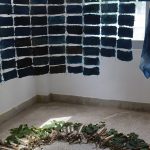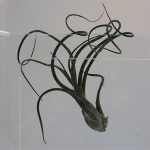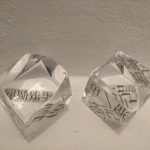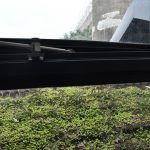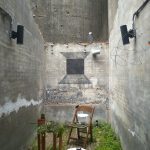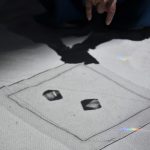遇/預見六燃:賴雯淑藝術裝置個展
Encountering / Foreseeing the Sixth Fuel Factory: Solo Art Installation by Wen-Shu Lai
展期:5/1~5/31,2021
地點:新竹市建美路38號,大煙囪下的家
Home under the Big Chimney, 38 Jianmei Road, Hsinchu City
賴雯淑藝術裝置個展《遇/預見六燃》紀錄片
Documentary: Encountering/Foreseeing the Sixth Fuel Factory 2021
拍攝、剪輯、混音:沈昕皜
旁白、文稿:賴雯淑
聲音素材來源:〈聲・活〉黃韜勻、李苡嬋製作
及紀錄片《大煙囪我的家》所收錄的《六燃之歌》,王坤玉清唱
片長:27 分鐘
賴雯淑 2005 年返臺教書,至 2021 年舉辦《遇/預見六燃》藝術裝置個展,中間剛好相隔 16年,是兩個等距雙圓,各以 16 為直徑——去鄉十六年,返鄉十六年,成為三十二年的時間跨距,也是一萬二千公里的反覆來回。在她自己成為母親的過程,她的母親也逐漸遠離。最後,時間的軌道把她送回記憶中彷彿熟悉,但內心陌生的出生地,在遊走間她不斷叩問:如何安居其中? 2015年,寡婦樓被拆,彷彿拉扯開一條時間甬道,讓她走進新竹六燃。於是她回到出生前的 1949,回到1943,回到 1895,回到無盡無邊的歷史岩層中,在那裏,過去、現在、未來不再是線性關聯,而是交疊共在,在眾聲雜沓的隱約光亮中,母親模糊的輪廓慢慢清晰起來。《遇/預見六燃》記錄的就是這樣的一個過程,在其中,她的個人生命與生活在這塊土地的人們逐漸有了交集,成為一個不斷疊加的行走與記憶地圖。
About the Documentary《Encountering / Foreseeing the Sixth Fuel Factory》
From “16 years away from home” to “16 years back at home”, the time is exactly two equidistant circles, each with a diameter of 16, which becomes a time span of 32 years and a distance of 12,000 kilometers. Now settling down in Hsinchu, it is only 2.1 kilometers away from the big chimney of the Sixth Fuel Factory. By taking the Tsing-Chiao trail, I walk into the historical relics of World War II. Time is never linear, but overlapping and coexisting. When I move the light to a certain time and space node, the story there will be poured out, giving a scene that I have never seen before, and activating my imagination of Mother. The vague outline gradually became clear. It seemed to come to the place where the memory was bound ─ there is the Mother. This documentary is about how I encounter and foresee her.
─ Wen-Shu Lai
國立陽明交通大學應用藝術研究所賴雯淑副教授,自2018年起執行新竹六燃「大煙囪廠房基地」保溫睦鄰駐站計劃至今已近三年,她指出新竹是一座二戰城市,需要一群具反思、批判和實踐能力的市民來保存、活化、滋養她。5/1至5/31在大煙囪下所舉行的《遇/預見六燃》──賴雯淑藝術裝置個展,就是這個行動的具體展現。賴雯淑說,遇/預見六燃,是一趟生命重新匯聚之旅,沿著蜿蜒如臍帶的小徑來到煙囪下,與母親相連,是意圖透過藝術行動來開啟六燃活隱喻、活歷史的建構,以「記憶・植物・地圖三部曲」的方式逐步展開,是將藝術實踐疊加在新竹六燃的紋理上,展開交纏互滲的多重部署,互文延展出個人生命中的六燃板塊。展出的七件作品,是個體遭逢歷史與記憶時,所碰撞堆擠出的生命皺摺,但與其說是個人的,還不如說是與眾人交會時所折射出的歷史晶體,是送給大煙囪的一份禮物。
這次的藝術裝置個展跟六燃保溫計劃成果展一起呈現,是希望透過保溫睦鄰與藝術行動,繼續開展個人與大眾的生命故事,啟發我們對六燃的過去、現在和未來的想像與規劃。賴雯淑副教授跟陽明交大六燃保溫團隊同心協力,一起透過新竹文史的論述、藝術跨域實踐、社區永續生活設計,以及智慧科技導入六燃場域的各項具體實踐行動,希望能以「活隱喻,活博物館」的理念,在不久的將來讓新竹日本海軍第六燃料廠能順利地轉型成一座「新竹生博物館」(Hsinchu Living Museum),在六燃的滋養下,孕育出新竹市民所期待的「生活、生命、生態、共生、共創、共好」新竹六燃博物館,是融合戰爭歷史、文化、藝術、生態、科技於一體的獨特博物館園區。
Wen-Shu Lai, an associate professor in the Institute of Applied Arts, National Yang Ming Chao Tung University, has directed the “Good Neighborliness Residency Project at the Big Chimney Factory Base” for three years since 2018. She pointed out that Hsinchu is a WWII city that requires the preservation, revitalization, and nourishment from its citizens who are reflective, critical, and willing to put their thoughts into action. Wen-Shu Lai’s solo art installation “Encountering / Foreseeing the Sixth Fuel Factory” on view this May is the very embodiment of her statement. This exhibition is a journey of reunion on which lives come to the chimney along the path as winding as an umbilical cord. Lai intends to reconfigure the living metaphor and living history of the Sixth Fuel Factory via her artistic praxis that unfolds as the “trilogy of memory, plant, and map.” Such step-by-step actions brilliantly open an ongoing dialectic dialogue with the spirit and texture of the Sixth Fuel Factory in Hsinchu. This exhibition is an act of interlaced and interpenetrating dispositifs that extends intertextually from her personal life experiences within the context of the factory. The seven installations featuring prominently in this exhibition are the wrinkles of life formed when the artist encounters and collides with historical moments and memories. Each work is not so much of individual, but more of the collective, as it is a historical crystal growing from the encounter with the residents here, a gift to the big chimney.
This solo exhibition is juxtaposed with the achievement exhibition of the Good Neighborliness Residency Project, for the purpose of spreading personal and collective life stories through the artistic action and the project, thereby inspiring our planning for the Sixth Fuel Factory and imagination of its past, present, and future. Prof. Lai and the NYCU team of the Good Neighborliness Residency Project have made concerted efforts in multifarious activities, including the discursive contextualization of Hsinchu’s culture and history, the transdisciplinary practice of arts, the sustainable design for community life, and the introduction of smart technologies into the Sixth Fuel Factory. With the vision of “living metaphor.living museum,” they strive to smoothly transmute the former Imperial Japanese Navy’s Sixth Fuel Factory, Hsinchu Branch into the “Hsinchu Living Museum” in the foreseeable future, which will in turn nurture and incubate a sui generis museum park, a perfect fusion of war history, culture, art, ecology, and technology that lives up to the citizens’ expectations for “livelihood, vitality, ecology, symbiosis, co-creation, and reciprocity.”






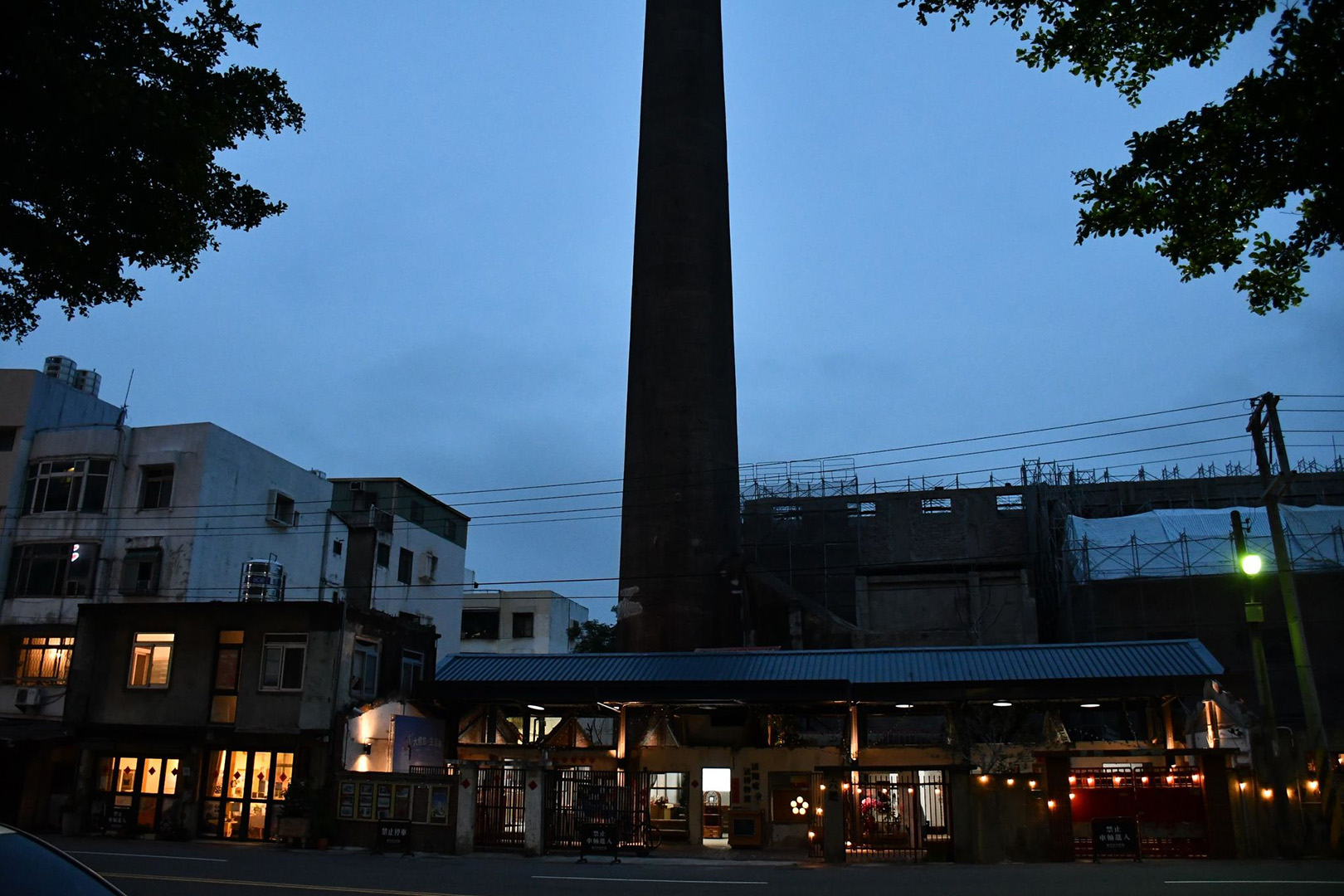






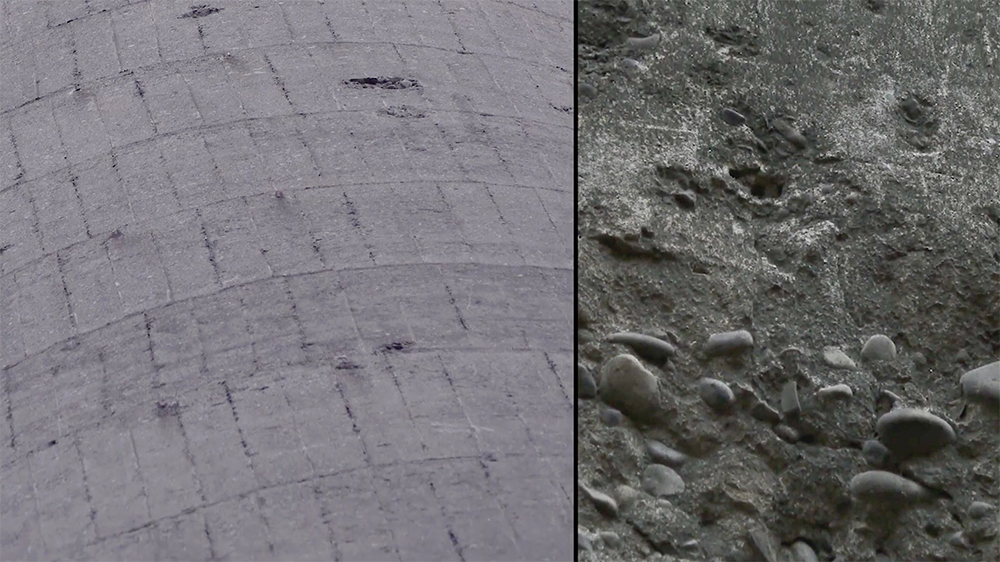


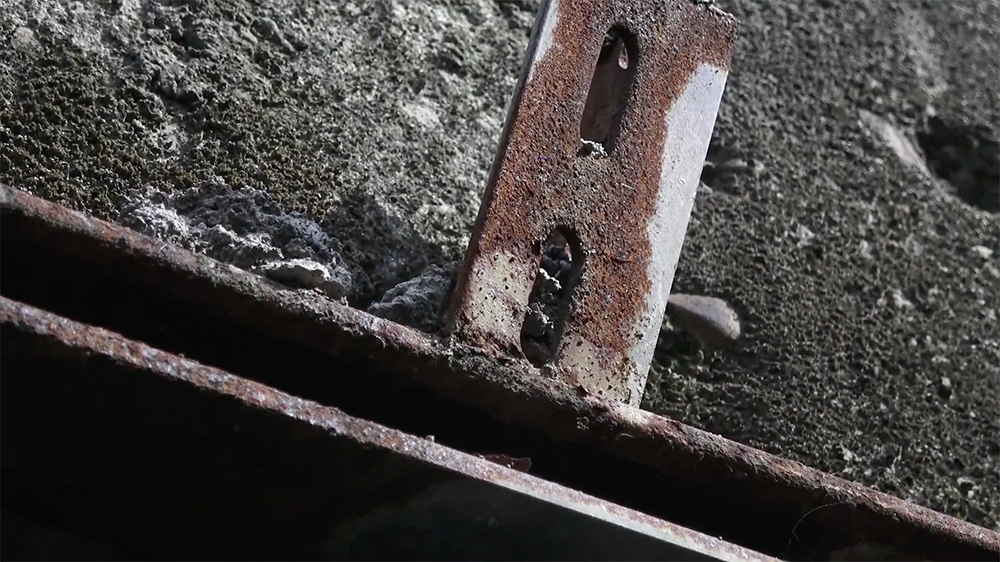





作品介紹
01 《觸.紋》Tactile・Veins
創作者:賴雯淑
媒材:
鐵件、構樹手工造紙、藍染布、複合材料、藍染、核桃染、構樹樹枝、構樹皮
年代:2021
在造紙過程中埋入創作者平日撿拾收藏的物件,是以物質來記錄、展呈個人的生活紋理。
從砍樹、煮樹、造紙、染色、拼接,過程是緩慢耗時的。此刻,人、材料、環境、身體、勞動形成不可分割的共同體,最後留下的就是這一件可觸、可視的物件,作為在這一過程中所存留的檔案記錄。
In the papermaking process, the objects that the artist picked up and collected on a daily basis are embedded, and the materials are used to record and display the texture of personal life. From cutting trees, boiling branches, making paper, dyeing, and quilting, the process is slow and time-consuming. At this moment, artist, materials, environment, body, and intensive labor form an inseparable wholeness. The result of the artmaking is this tangible and visible object, which serves as an archive file in the process.

02 《植・根》Plants.Roots
創作者:賴雯淑
媒材:壓克力、植物
協力藝術家:廖采晨
年代:2021
從「大煙囪下的家」二樓往外看,煙囪下的平房屋頂長滿了一整片的「落地生根」(又稱「葉生根」),蒼鬱的綠葉展現出堅韌的生命力。「落地生根」常被用來指涉尋求安定與歸屬的渴望,但就植物學來看,「落地生根」這類植物並非由種子生殖,而是由葉進行無性生殖。而常被用來比喻族群的甘藷與芋頭,其實是由塊根和塊莖所進行的無性生殖。落地生出的根並非來自老根,而是在無根狀態下,所生出的「不定根」。
Looking out from the second floor of the “Home Under the Big Chimney”, the roof of the bungalow under the chimney is covered with “Air Plants”, and the lush green leaves are full of vitality. “Air Plants”(Bryophyllum pinnatum)are often used to refer to the desire to seek stability and belonging. However, from a botanical perspective, “Air Plants” do not reproduce via seeds, but via leaves for asexual reproduction. The sweet potato and taro plants, which are often used as metaphors for ethnic groups in Taiwan, actually reproduce asexually in a process carried out by roots and tubers. The roots of the Air Plants do not come from the old roots, but “adventitious roots” that are born without roots.

03 《聲.活》Sound.Living
聲音裝置,2021
創作者:賴雯淑
協力藝術家:黃韜云、李苡嬋、李昇祐、許雅貞
媒材:矽膠翻模、Poly resin、水管、光纖、LED、Kinect sensor
霜毛蝠、雞舍日常、廠房施工、民眾共餐、 導覽的各種聲音,不論是人工音或自然音, 皆廣泛涵蓋了記憶音、意像音、文化音及社 會音。音景 (Soundscape) 重新啟動認識新竹 六燃的管道,使人不再單單依賴視覺來探索 世界。透過採集大煙囪廠房基地可聽範圍內 外的眾聲喧嘩來構築常民生活。
安靜的展場會由進入的觀眾所觸發,啟動預 設的三首音樂。音樂作品由音景與電聲結合 而成,音景部分,首先最具特色的是六燃大 煙囪內的蝙蝠叫聲,它貫穿了三首樂曲作為 核心的音樂要素。 另外,音景也取材自六燃 實地的聲響,如蟲鳴、鐵門、市集喧嘩聲、 風鈴聲,以及「大煙囪下的家」 導覽員的聲音。 搭配上六燃昔日作為眷村,有許多居民曾居 住於此地的聲音圖鑑,也在第一首樂曲的後 段放入了廚房烹飪、切菜,烤麵包機等居家 的聲音,試圖以聲響穿越時空引領民眾進入 屬於六燃的生活語境當中。
《聲.活》 除了以音景呈顯此區的聽覺紋理,也 會收錄現場觀眾說話的聲音。即時的聲音回放 裝置,讓民眾可以對著懸掛在耳朵上方的麥克 風說話,話語被接收後,又以不同的聲音姿態 穿梭回放於空間中,然後再次混入既有的聲音 檔案中,並轉存為六燃的聲音資料。這不僅是 透過聲音檔案來理解新竹六燃的當下和過往, 也是保存與活化六燃的另一種方式。
The sounds, some man made and some natural, of frosted bats, chicken coops, factory construction, community luncheon time, and guided tours cover a wide range of memory sounds, image sounds, cultural sounds, and social sounds. Soundscape can restart the understanding of Hsinchu’s Sixth Fuel Factory, so that people no longer rely solely on visual exploration. Construct the ordinary life by collecting the noises and sounds inside/outside the audible range of the Big Chimney Factory area.
The audience will activate the preset music by entering the quiet exhibition room. The music is composed of soundscape and electroacoustic. The most distinctive part of the soundscape is the sound of bats recorded in the chimney of the Sixth Fuel Factory, which runs through the three pieces of music as the core musical elements. In addition, the soundscape is composed of the sounds from the area of the factory, such as insects, iron gates, market noises, wind chimes, and the voice of the tour guide of “Home Under the Big Chimney”. Many residents used to live in the military dependents’ village inside the factory. Thus, in the latter part of the first piece of music, the sound of cooking, cutting vegetables, toasters, and other household sounds are also added, hoping it will lead the audience to travel into the daily lives of the factory in the past.
In addition to presenting the auditory texture of this area via soundscapes, the voice and sounds of the audience will also be recorded and mixed into the existing sound file. This is not only an important clue to understanding the “present” and “history” of the Hsinchu Sixth Fuel Factory, but also a way to preserve and regenerate it.
04 《編織.石頭》Weaving.Rocks
裝置作品,2020~2021
創作者:賴雯淑
媒材:耳朵、石頭、種子、樹枝、線材
石頭是岩石的俗稱,對地質科學家而言,石頭是記錄地球歷史的日記;對行走者而言,石頭是路徑的標記物,從這一顆到下一顆,除指涉空間的距離,也是時間的刻度;對撿拾者而言,石頭就跟種子、落葉一樣,是大地為過客準備的見面禮。創作者將多年來隨機收藏的石頭與種子做成懸掛物件,透過逐一編織的方式凸顯其存在,也是創作者記錄行走、撿拾、收藏及分享撿拾物與記憶的方式。
Rock’s common name is stone. For geoscientists, rocks are diaries that record the history of the earth; for walkers, rocks are markers of a path. From one rock to the next rock, it can refer to a distance, as well as a scale to measure time; for pickers, rocks are like seeds and fallen leaves, and are the first-meeting gifts that the earth prepares for passers-by. The artist made mobile sculptures using the stones and seeds she has randomly collected over the year. Through weaving each stone, she highlights each individual stone’s existence. This is a way for her to enjoy and listen to nature’s rhymes. This installation intends to document her daily walk, picking up and collecting stones and seeds, as well as to share the particular experiences and memories with the viewers.
05《種子藏.歷史塚.生命地》 Seed depository.History mound.Living ground
裝置作品,2021
創作者:賴雯淑
媒材:石頭、種子、木頭、金剛砂、棉麻線材、裝飾物件等
緊鄰在大煙囪下舊日眷村的房殼,有風有雨有日曬,這裡有長久以來累積的意識,更迭的歷史,以及來來去去的生命。煙囪下究竟堆疊了多少年代的記憶與情感。這些縈繞不去的,也是讓夢想發生,生命到來的能量。金剛沙承載著創作者所收藏的種子、石頭與木頭,儀式般地擺放於戶外特製的煤斗狀展台上,自然地受潤清洗於風雨陽光下。種子藏[1]、歷史塚、生命地指向大煙囪所曾見證過的人、事、地、物,無始無終地存於種子識中。
The roofless military dependent’s house immersed in wind, rain and sun, is right next to the former Japanese Sixth Fuel Factory under the big chimney. There are long-term accumulated consciousness of people, the evolving histories, and lives coming and going. How many years’ memories and emotions have been stacked, folded and unfolded under the chimney? The numerous lingering substances are also the energy that makes dreams happen and life arrive. The artist places her collected seeds, stones, and a piece of wood, in a ceremonial manner, on top of countless carborundum supported by three coal-funnel-shape stands. The installation represents “seed depository, historical mound, and living ground” meaning the big chimney has witnessed whatever was once existed there. No beginning and no end, all of them are stored in alaya-vijnana──a substratum of consciousness.[2]

[1] 有「藏識」之意,八識中第八阿賴耶識。阿賴耶,譯曰藏。含藏一切種子之識也。業疏濟緣記三下:「梵云阿梨耶,或云阿賴耶,此云含藏識,謂含藏一切善惡因果染淨種子。」丁福保,《佛學大辭典》
[2] Alaya-vijnana can be understood as “storehouse (or just “store”) consciousness”, meaning the foundation or basis of all consciousness. Barbara O’Brien, 2018〈Alaya-vijnana: The Storehouse Consciousness〉
06 《時間甬道》A Time Tunnel
裝置作品,2021
創作者:賴雯淑
媒材:石頭、壁繪
協力藝術家:廖采晨、莊士頡、游婷雯
空間是物質的、是關係的,是千百萬個故事穿插其間,交錯疊加而成。時間甬道允許時間旅行,它的存在,讓平行時空旋轉,就像神奇的風茄[1],能讓同理心與愛得以交會,生命得以重新萌芽綻放。
煙囪下如花園般的空間,中間牆面畫有看似突出的煤斗,也像向內深延的甬道,現在與過去是雙向共在的路徑。兩側牆上的風茄能讓受創的生命得以療癒,就像拉結生下約瑟與便雅憫,命脈得以延續,由苦轉福。[2]
Space is material and relational. It is composed of millions of stories interspersed and superimposed. A time tunnel is a passageway enabling time travel. Its existence makes the parallel time and space revolve, like a magical mandrake, allowing empathy, love and life to meet and sprout again.
A garden-like space under the big chimney, with a seemingly protruding coal funnel painted on the central wall, which also looks like a tunnel extending inward. The present and the past is a co-existed two-way path. The mandrakes on both sidewalls can heal the traumatized life, which is similar to that when Rachel gave birth to Joseph and Benjamin, the lifeline is continued, turning suffering into a blessing.
[1] 風茄又稱催愛果或催情果,性毒不可食,有藥效。傳說風茄可使人生愛和生育。聖經(創30:14~16)記載雅各的妻子拉結無法生育,爲了想要懷孕生子,因此向姊姊利亞要取風茄,應許以雅各與利亞一夜同眠來交換。受神顧念,拉結終於順利懷孕生子,名約瑟,後來長大成為埃及國的宰相,保全以色列家命脈。李道生,《舊約聖經問題總解下》(香港:浸會出版社,1985)。
[2] 聖經記載雅各(Jacob) 和拉結 (Rachel) 最小的兒子便雅憫(Benjamin),因受到哥哥約瑟(Joseph)手足之情的照護,從苦難之子(son of suffering)轉為受福之子(son of blessing)。
07 《歷史.結晶體》History.Crystal
裝置作品,2021
創作者:賴雯淑
協力藝術家:吳佳駿、黃韜云
媒材:壓克力、金剛沙、投影
當流動的光線照射在不規則的壓克力多面體上時,會因每個切面的角度不一折射出多道方向各異的光線。歷史也如會因視角觀點不同,給出不同的歷史敘事。但不同的敘事也將會交集聚合,形成結晶體般的光效。角落安靜的藍綠光波猶如流動的生命體,與光折射所交會出的結晶光體一起給出另一種光影感知經驗!
When the flowing light shines on the irregular acrylic polyhedron, because the angle of each cut surface is different, it will refract light in different direction. History is also like a crystal, giving different historical narratives due to different perspectives. However, the various narratives will aggregate and intersect to form a crystalline light effect. The blue-greenish waves of light in the corner are calm and serein, flowing like a living life form. Together with the refracted crystals, they give rise to another realm of sensory experiences.
製作團隊
策展人/藝術家:賴雯淑
展場規劃與施作:邱筠穎、黃聖軒建築師
平面設計:呂彥青、賴雯淑
主視覺:賴雯淑、廖采晨
攝影:陳瑞樺、張懿、賴雯淑
紀錄片:沈昕皜
網頁設計:沈君怡
展覽協力團隊
黃韜云、李苡嬋、許雅貞、廖采晨、莊士頡、游婷雯、郭家宏、李昇祐、吳佳駿、蘇淑芬、蔡乙慈、沈致軒、林瑋新
共同主辦
國立陽明交通大學跨領域藝術團隊、應用藝術研究所、文化研究國際中心、社會與文化研究所、亞際文化研究國際碩士學位學程(台灣聯合大系統)
協辦|新竹市文化局、六燃保溫計劃團隊
